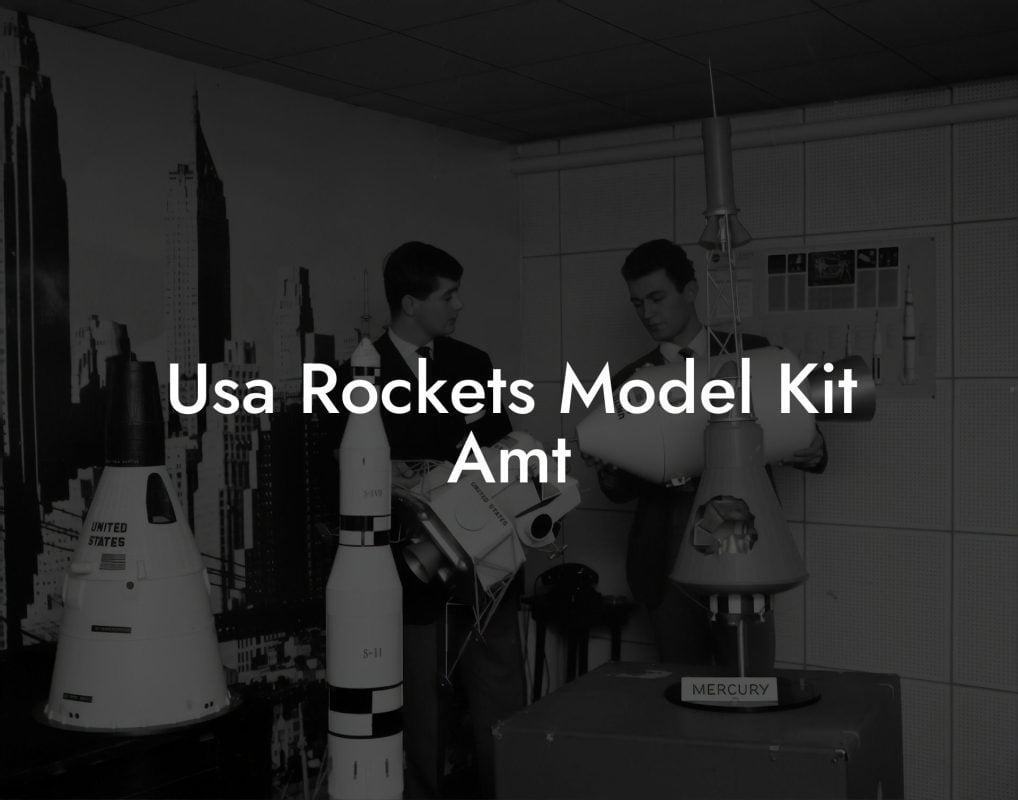Imagine soaring through the skies, defying gravity, and exploring the thrill of space travel – all from the comfort of your backyard! Welcome to the fascinating world of model rockets, where science meets adventure and creativity knows no bounds. Buckle up, because we're about to blast off into the physics of model rockets and uncover the secrets behind these miniature marvels.
Quick Links to Useful Sections
The Fundamentals of Model Rocketry
Before we dive into the physics, let's cover the basics. A model rocket is a scaled-down version of a real rocket, designed to reach incredible heights while carrying a payload – often a tiny camera, GPS tracker, or even a small creature like a frog! The anatomy of a model rocket typically consists of a fuselage, fins, nose cone, and a recovery system.
But what makes them fly? The answer lies in the principles of aerodynamics and propulsion. As we explore the physics of model rockets, we'll delve into the forces that govern their flight, from lift and drag to thrust and gravity.
Aerodynamics 101: Lift and Drag
When a model rocket blasts off, it encounters two primary forces: lift and drag. Lift is the upward force that opposes weight, created by the shape of the rocket's nose cone and the airflow around it. The curved surface deflects the air downward, generating an area of lower air pressure above the rocket and an area of higher air pressure below.
Drag, on the other hand, is the force that opposes motion, caused by air resistance. As the rocket gains speed, the air molecules in front of it are pushed aside, creating a region of high pressure. The rocket's shape, particularly the fins, helps to reduce drag by creating a smooth flow of air around the vehicle.
Looking For The Best Model Rocket Kits? You'll Love These:
- Lift Equation: L = 0.5 * ρ * v^2 * Cl * A
- Drag Equation: D = 0.5 * ρ * v^2 * Cd * A
Understanding lift and drag is crucial for designing and building efficient model rockets. By optimizing the shape and size of the rocket, you can minimize drag and maximize lift, achieving greater heights and more stable flights.
Propulsion Systems: Thrust and Impulse
Now that we've covered aerodynamics, let's talk about the heart of any rocket: the propulsion system. In model rockets, this typically consists of a solid-fuel motor, which produces a rapid release of gas and heat through combustion.
The key to a successful launch is generating enough thrust to overcome the weight of the rocket and propel it upward. Thrust is created by expelling hot gases out of the back of the rocket, producing a reaction force that pushes the vehicle forward.
Impulse, on the other hand, is the product of the thrust force and the time over which it's applied. A high-impulse motor will produce a more rapid acceleration, resulting in a faster and more efficient climb.
- Thrust Equation: F = (m_dot * v_e) / (1 + (A_e / A_t))
- Impulse Equation: I = F * Δt
By selecting the right motor and optimizing the rocket's design, you can achieve the perfect balance of thrust and impulse, sending your model rocket soaring to new heights.
Gravity and Trajectory: The Flight Path
As the rocket gains altitude, it must contend with the force of gravity, which pulls it back down towards the Earth. The trajectory of the flight path is influenced by the initial velocity, angle of launch, and air resistance.
By understanding the interplay between these factors, you can predict the rocket's flight path and optimize its design for maximum altitude or distance.
- Gravity Equation: F_g = m * g
- Trajectory Equation: y = v_0 * sin(θ) * t - (1/2) * g * t^2
Whether you're aiming for a record-breaking altitude or a precise landing, mastering the physics of gravity and trajectory is essential for success in model rocketry.
Stability and Control: The Fins and Recovery System
A stable model rocket is crucial for a successful flight. The fins, located at the base of the rocket, provide stability by creating a force that opposes any deviation from the vertical axis.
The recovery system, which includes the parachute or streamer, ensures a safe and controlled descent back to Earth. By selecting the right materials and designing the recovery system correctly, you can guarantee a gentle touchdown and minimize the risk of damage.
- Stability Equation: F_s = 0.5 * ρ * v^2 * Cl * A
- Recovery System Equation: v_d = √(2 * m * g / (ρ * Cd * A))
By understanding the physics of stability and control, you can build model rockets that fly straight and true, and recover safely after their journey.
Resources and community Support: Your Next Steps
Ready to take your model rocketry skills to the next level? Explore the following resources and communities to stay up-to-date with the latest trends, techniques, and innovations:
Join online forums, attend local rocketry clubs, and participate in competitions to connect with fellow enthusiasts, learn from their experiences, and share your own knowledge.
Frequently Asked Questions: Physics of Model Rockets
Got questions about the physics of model rockets? Check out these FAQs for answers:
1. What is the difference between lift and drag?
Lift is the upward force that opposes weight, while drag is the force that opposes motion.
2. How do I calculate the thrust of a model rocket motor?
Use the thrust equation: F = (m_dot * v_e) / (1 + (A_e / A_t)).
3. What is the purpose of the recovery system in a model rocket?
The recovery system ensures a safe and controlled descent back to Earth, minimizing the risk of damage.
4. How do I optimize the design of my model rocket for maximum altitude?
Focus on minimizing drag, maximizing lift, and selecting the right motor and recovery system.
Looking For The Best Model Rocket Kits? You'll Love These:
Useful Interruption: Dive deeper into the world of Model Rockets with our most popular sections. If there is anything you think is missing or anything you would love for us to write about, just give us a shout.
- Getting Started & Basics With Model Rockets
- Model Rocket Design, Build & Customization
- Model Rocket Propulsion & Engine Technology
- Model Rocket Launch Techniques & Recovery
- Model Rocket Advanced Rocketry & Innovations
- Model Rocket DIY and Customization
- Model Rocket Equipment Reviews & Digital Tools
- Community, Competitions & Education
- Model Rocket Troubleshooting & FAQs
- Model Rocket Bonus/Seasonal & Niche Topics
A group of model rocket enthusiasts gathered at a field for their weekly launch event. Among them was Dave, a seasoned builder known for pushing the limits of hobby rocketry. This time, he had outdone himself.
“Ladies and gentlemen,” Dave announced, dramatically pulling a cloth off his latest creation, “I present to you: The Kraken!”
The crowd gasped. This wasn’t just a model rocket, it was a monster. The thing stood 8 feet tall, had six clustered engines, and was covered in enough duct tape to qualify as a classified aerospace project.
“Dave,” muttered Steve, the cautious safety officer, “Have you, uh… done the math on this?”
“Math?” Dave scoffed. “I built it in my garage at 3 a.m. with parts from eBay. This is an art piece, Steve.”
The countdown began.
5…
4…
3…
2…
1…
The engines ignited with a BOOM, and The Kraken shot up… kind of. It immediately did a violent barrel roll, narrowly missing the spectators before skyrocketing at an angle that could only be described as “legally questionable.”
The crowd collectively ducked as The Kraken flew straight over the adjacent cornfield, where Old Man Jenkins, the grumpiest farmer in town, was minding his business.
KABOOM!
The rocket disappeared behind the barn. A moment later, a flaming piece of Estes igniter wire landed at Steve’s feet. The silence was deafening.
And then, an unmistakable sound echoed across the field.
Jenkins’ shotgun being cocked.
“DAVE!!!” Steve shouted. “RUN.”
And that was the day Dave invented the first-ever biologically powered rocket booster: pure adrenaline.
To this day, nobody knows where The Kraken landed, but legend has it, it still haunts the skies, terrifying unsuspecting drones and low-flying birds.















